Want to hear more from the actors and creators of your favorite shows and films? Subscribe to The Cinema Spot on YouTube for all of our upcoming interviews!
Managing editor & film and television critic with a Bachelor's of Arts in English Literature with a Writing Minor from the University of Guam. Currently in graduate school completing a Master's in English Literature.
Tonight’s episode of Craig Mazin and Neil Druckmann’s post-apocalyptic drama television program, The Last of Us, brings us to the season’s harshest antagonist yet, David (guest star Scott Shepherd). Following last weekend’s seventh episode, the series concludes the three-part winter section as shown through the 2013 video game source material.
The penultimate episode of the series’ premiere season is titled, “When We Are in Need”. It is written for television by Mazin and directed by Ali Abbasi.
In this review, I will be discussing The Last of Us Season 1 Episode 8. There will be no spoilers present, as the title of this article suggests. Nonetheless, please read ahead at your own discretion as I will discuss some character developments and some references to the source material, i.e., the 2013 video game.
Please note that I have seen all nine episodes of this first season at least twice each ahead of the season’s release.
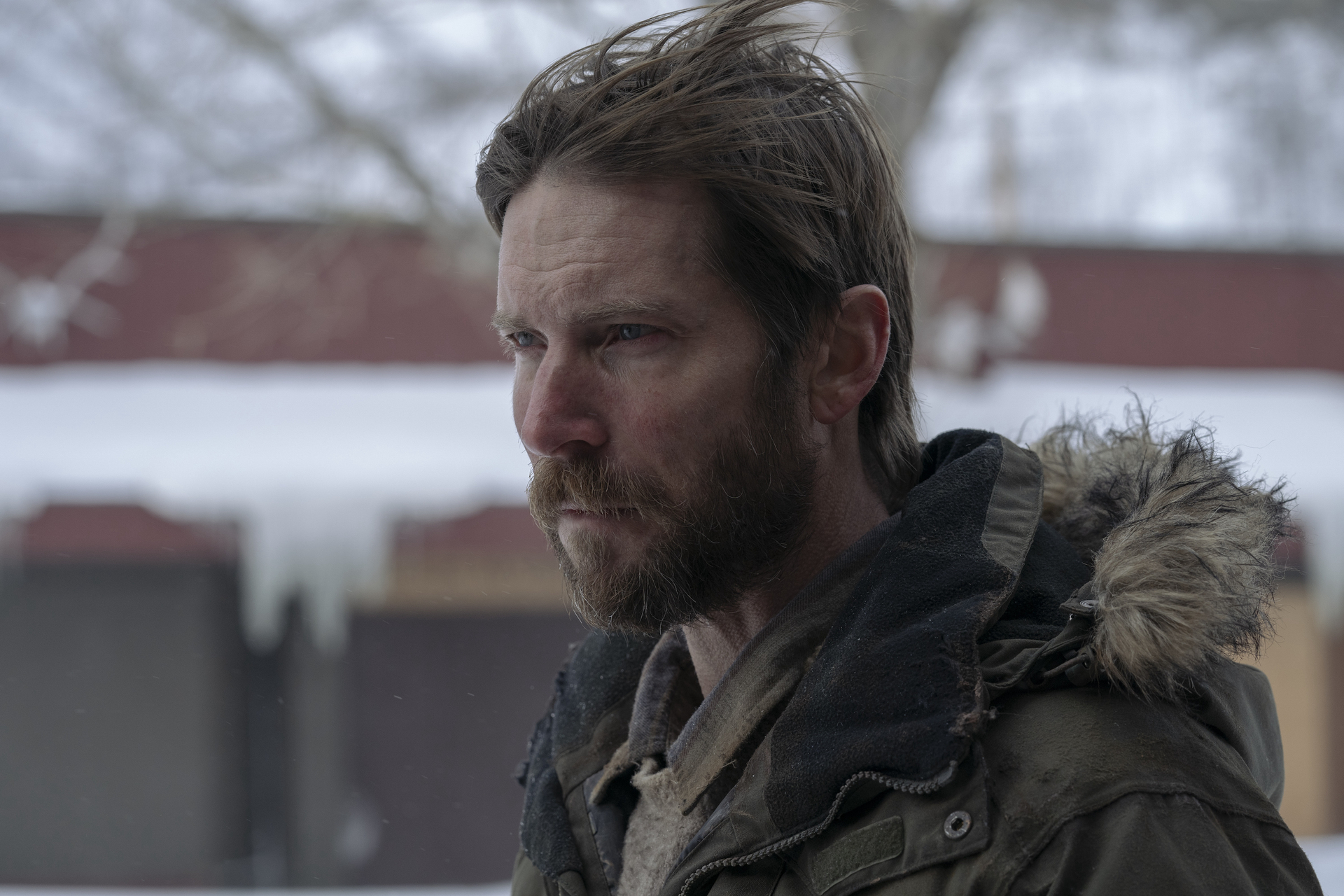
Discussion
This weekend’s second-to-last episode of The Last of Us is yet another stressful story to endure. Although, in this post-apocalyptic world of the Infected, I mean that in a good way. Paino’s production designs, Macaulay et al’s art directions, and the team of set designers craft a neat look at Silver Lake, Colorado with the exteriors of the town’s resort neighborhood and the shack in the middle of the woods.
Specifically, their modeling of the steakhouse restaurant is one that is simpler than that of the 2013 video game. It comes off as more spacious, and it must be because there are fewer booths and more tables inside the dining area. The shack is a little more exposed and ruined, which means what happened in that part of the source material does not translate to the adaptation. Instead, the shack serves more as a little set for a few minutes of some theatrics, and that could be a good thing. Consequently, Infected individuals are completely absent from the episode, which is one less than what we got in the previous episode.
As for the neighborhood, there is some insinuation of a breezy and windy winter atmosphere. Yet, it is not as severe as it had been in the game. Unfortunately, Ellie’s (Bella Ramsey) encounter with David and his men is brief, so do not expect any long cat-and-mouse chase scene. What I also admire about the episode of Carlsen’s cinematography, with shots of the town from within and outside in the distance. Mollo’s editing is intriguing 99% of the time, however, I do have to question a little part where David shoots his gun at another character.
Screenwriting
Craig Mazin’s teleplay for this episode is worth noting. Whether the episode’s 50-minute and 50-second runtime is necessary to properly tell this part of the story is debatable. On one hand, the screenwriter gives us more background on David and his group of survivors. Opening the episode with David’s reading of the King James Version Scripture—one that is required of the plot, even going so far as to exclude a line of passage—is remarkable. From the beginning, you can tell what person the storytellers are painting him out to be.
While not concretely stated, David makes an implication that he is one of the four horsemen of the apocalypse or even the second coming of Christ himself. A part of me wants to agree with this. The entirety of The Last of Us starts with the Cordyceps outbreak (Conquest/ Pestilence). Then, Mazin and Druckmann showcase the fight between civilians and rebels against the FEDRA military (War). Now, we have a group of survivors who deal with dwindling food rations and how they deal with these matters (Famine). Of course, Death is present in all episodes of the series, consisting of major spoilers, from Joel Miller’s (Pedro Pascal) daughter to Ellie’s closest friend.
On the other hand, if you are a die-hard fan of the video game, then something definitely is missing from the narrative. Ellie’s escape from David’s clutches is shorter, and Joel does not traverse the snow as much as we would like. Still, Mazin inserts a single comedic line of dialogue into the drama, and he does it perfectly. I love that Ramsey is able to deliver as their character, Ellie, while still keeping composure during the episode’s circumstances.
More Notes Relating to The Last of Us Video Game
One key moment from the video game involving a white rabbit is changed for the television series, and it could be due to the fact that Ellie never wields a bow and arrow in the season. Of course, that also begs us to ask just how brutal the show can be in depicting images of death. While many viewers have commented on the horror of the series, the video game has been more graphic. I can only imagine how Season 2 will be adapted to the screen.
At one point, Ellie gets her hands on a meat cleaver instead of a machete like in the video game. This does not change the impact on what she uses the blade for, but it is interesting to see that minor change in detail. The restaurant scene of the episode also removes the shattered glass element of the video game. This was previously included in the “Infected” episode as well as “Please Hold My Hand”, which led into the following episode. I cannot see why that could not work in this current episode, but even then, Ellie’s fight with David is still a stressful sight.
There is a moment where one of the protagonists performs a stealth attack, like in the source material. I like how this was executed and the purpose thereof that it was needed for.

The Crew Behind The Last of Us
The Last of Us is created for television by Mazin and Druckmann.
Greg Spence and Cecil O’Connor serve as the producers of the series. Jacqueline Lesko is the co-executive producer. Asad Qizilbash, Carter Swan, Evan Wells (Naughty Dog), Rose Lam (Schmigadoon!), Carolyn Strauss, Druckmann, and Mazin are the executive producers.
Nadim Carlsen serves as the cinematographer for the episode. Roger Vernon does additional photography.
Cindy Mollo (Oz, Homicide: Life on the Street, The Book of Eli, Ozark) is the editor for the episode. Emily Mendez, Timothy A. Kuper, Ben Cook, and Andrew McGivney are the assistant editors.
Gustavo Santaolalla (Brokeback Mountain) scores the music for the episode, with David Fleming doing additional scoring. Jake Staley and Juan Luqui do additional music for the episode. Christopher Battaglia and Chris Terhune serve as sound designers.
Evyen J. Klean (Game of Thrones, Watchmen, Euphoria, Scenes from a Marriage, Peacemaker, House of the Dragon) and Ian Broucek (Peacemaker, Orphan: First Kill) are the music supervisors. Maarten Hofmeijer serves as the music editor. From PlayStation Studios, Scott Hanau serves as the score supervisor. Andrew Buresh, Anthony Caruso, and Scott Bergstrom do the music engineering and editing. Evan M. Greenspan does the music licensing for the show.
Victoria Thomas is the casting director for the episode. Corinne Clark and Jennifer Page are the Canadian casting directors for the episode. Megan Bayliss serves as the Canadian casting associate. Elizabeth Brown is a casting associate. Alyson Lockwood is the extras casting director. Isabel Barker is the cast assistant.
Guy Bews is the stunt coordinator, with Maggie Macdonald as the assistant stunt coordinator.
Denton Edge serves as the stunt double for Joel. Taryn Roberts is the stunt double for Ellie. David Edgar serves as the stunt double for David.
Colin Lorimer is credited as the storyboard artist for the episode.
Aesthetics
John Paino serves as the production designer. Don Macaulay is the supervising art director.
Bill Ives (Honey I Shrunk the Kids: The TV Show, FX’s Fargo, Wynonna Earp, Ghostbusters: Afterlife), Stevo Bedford, and Callum Webster are the art directors for the episode. Hitoshi Okamoto, Nathan Blackie, Matt Vest, and Oshy Parasol serve as the assistant art directors.
Kyle White (The X-Files, Crazy Rich Asians, The Predator, Snake Eyes), Austin Wang (DC’s Legends of Tomorrow, Always Be My Maybe, The Man in the High Castle, Snake Eyes, Pachinko), Shannon McArthur (The Magicians, The Stand), Michael Erickson (Once Upon a Time, Falling Skies, The Flash, Supergirl), Peter Stratford (Insomnia, Scooby-Doo 2: Monsters Unleashed, Battlestar Galactica, X-Men Origins: Wolverine, The Cabin in the Woods, White House Down, Dawn of the Planet of the Apes, Tomorrowland, Star Trek Beyond, Netflix’s A Series of Unfortunate Events, Ghostbusters: Afterlife, Fresh), and Hailey Darling are the set designers for the episode. Paul Healy is the set decorator. Alan McCullagh, Alexandra M. Lingnau, and Jason Coxworthy are the assistant set decorators.
Cynthia Ann Summers is the costume designer for the series. Kelsey Chobotar and Rebecca Toon are the assistant costume designers.
Chris Glimsdale is the head of the hair department. Penny Lea Thompson serves as the key hairstylist. Courtney Ullrich is Pedro Pascal’s personal hairstylist.
Connie Parker is the head of the makeup department. Joanna Mireau (Peacemaker) is the key makeup artist. Annie Parkinson is a second-unit assistant makeup artist.
Joel Whist is the special effects supervisor. Alex Wang is the visual effects supervisor. Sean Nowlan is the VFX producer. Luke Botteron is the VFX editor. Baljot Bhatti and Ryan Faulkner are the VFX assistant editors.
From Distillery VFX, Jon Mitchell serves as the VFX supervisor. Greg Kegel is the VFX producer.
The Cast of The Last of Us
Bella Ramsey portrays Ellie. Pedro Pascal portrays Joel Miller.
Scott Shepherd guest stars as David, the main antagonist of the episode. Troy Baker portrays James, one of his men.
Ari Rombough co-stars as Joyce. Sonia Maria Chirila portrays Hannah, Joyce’s grieving daughter.
Nelson Leis plays Josiah. Jason Vaisvila plays Marco. Benjamin Rogers plays Timothy.
Erik Lindquist plays a villager.
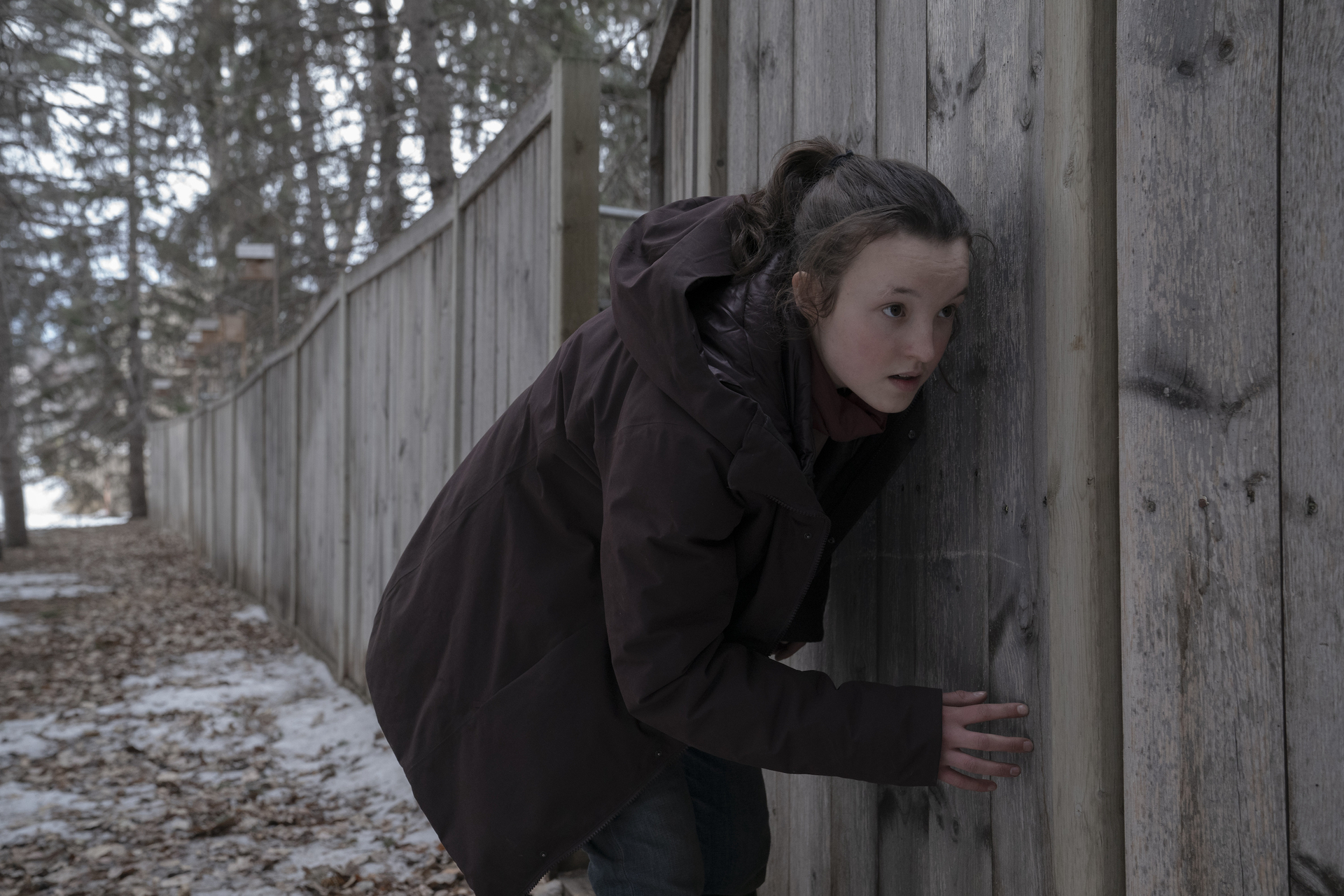
Performances and Character Developments
Having seen the episode three times already, I can say that Ramsey solidifies their role as the teenage protagonist, Ellie. The actor has performed well throughout the season. Regarding fear, despair, and utter sorrow, they have done perfectly in the past three episodes. In “Endure And Survive”, Ellie revealed to another character her biggest fear. Soon after, she watched two new friends die in front of her very eyes. The following episode, “Kin”, involves Ellie telling Joel about this fear of being alone. Then, last week’s episode, “Left Behind”, showcases Ellie’s source of this fear via the loss of a loved one.
The character’s feelings are still present. However, what makes this current episode different is the introduction of a terror that she has not quite experienced before. There is one line of dialogue wherein Ramsey delivers while kicking a tray of food that felt awkward. Aside from that minor detail, the actor brings the minutiae of this part of the character’s winter season experiences to life pristinely.
This is a version of Ellie that has been teased since “Long, Long Time” through her encounter with an Infected. Last week, we saw that the source of her pain was the loss of her best friend at the hands of an Infected. This week, Ramsey exhibits a dark transformation for Ellie and the individual she would grow to be in the future, like in The Last of Us Part II. If you were cynical about the actor playing the role before, then you will come to see them in peak Ellie for the season.
Joel’s Impact
Likewise, Pascal delivers well during his interrogation of two of David’s men, despite not saying much for a lot of the episode. I like the subtle parallel between his delivery of certain lines here and the similar lines spoken to the Native couple in “Kin”. Joel seldom gets to his darker side, as was shown in the pilot episode, so it was nice to see a sort of balance between his anger and softness. However, I am curious to know how much impact this will play in the future.
Before we can get into next week’s first season finale, I do believe it is important to take note of Pascal’s presence as Joel and what degree of influence that has on Ellie’s overall development of her milieu. The most we see Joel in a vulnerable state is in “Kin”. Even then, that does not last as long as viewers would like. Pascal portrays the character perfectly, but I just feel there needs to be more of him on-screen. It also does not help that next week’s episode is less than 44 minutes long, and even less if you shed off the prologue, introductory title sequence, and the end credits.
Antagonists
Troy Baker is quite the skeptic as one of David’s followers. The actor gets sufficient screen time to portray James, and while I have not seen him as often in live-action content, I would love to see him in more films and television programs. James makes for a great foil to David as someone with some doubts and underlying fears of being cast out of the group.
Shepherd portrays David so well and in an eerie manner. When it comes to line delivery, the actor possesses potency as a rhetorician. His talk of luck could have gone longer. However, David makes up for it with his speeches about fathers, hunger, power, and belief. By the time you realize the main point that the character is making, his monologues have already sent chills down your spine.
Simply put, David is not a good person at all. Through his words and his physical appearance (thanks to the costume team), it is evident that the character is not well. He tries to justify this by making rash comparisons between him and Cordyceps. You might think he is in the right, but again, his rhetoric, especially as a preacher, is more or less effective. I believe it could be due to the fact that he keeps himself calm and collected throughout a good majority of the episode. It is satisfying to see what becomes of him by the end of it all. Although, I cannot imagine that there could be viewers who would agree with his specific beliefs.
Final Thoughts on The Last of Us Season 1 Episode 8
“When We Are in Need” is one of The Last of Us‘s stronger episodes. Of course, however, it does come at the cost of our two characters’ well-being. Ellie will never be the same after this traumatizing event. This has been something that Joel had been trying to protect her from for months. While it only seems like weeks to us as viewers, there has been nearly a year’s worth of development between Joel and Ellie to be had.
The visual effects of this winter portion are stunning, and it is a shame that we have to see it go. Although, that is temporary, given what some of us know about The Last of Us Part II. Summers et al’s costume designs also give us a lovely look at the series’ characters. In comparison with the video games, it makes more sense that Ellie wears something on her head to prevent that part of her body from suffering from hypothermia. Next weekend, we see more background development with Ellie and a major choice made by Joel in the season finale. Until then, all we have is this episode to ponder.
The Last of Us is now airing on HBO and streaming via HBO Max!
Have you played The Last of Us or its sequel? If so, what are your thoughts? Let us know! For more drama, horror and science-fiction-related news and reviews visit and follow The Cinema Spot on Facebook, Twitter, and Instagram!
Also, if you want a closer look at Ellie, Joel, and the Infected, then you might want to purchase the Artwork of The Last of Us (2013) via Amazon!
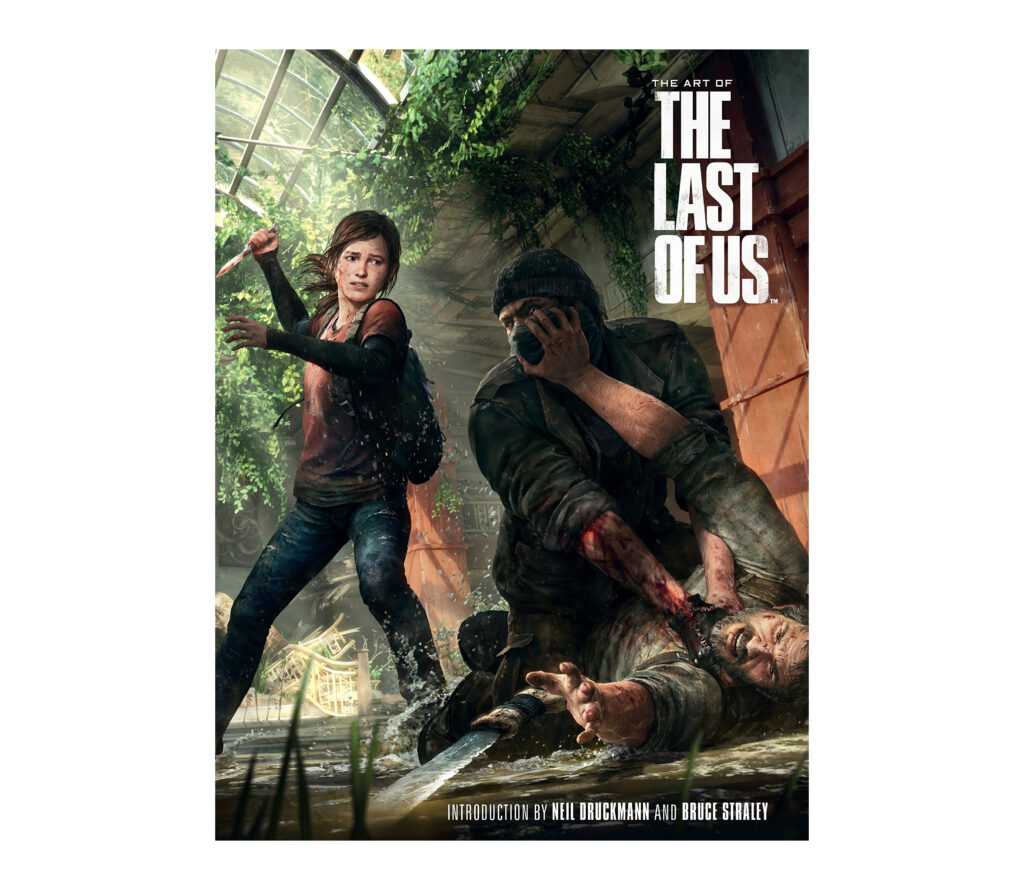
Managing editor & film and television critic with a Bachelor's of Arts in English Literature with a Writing Minor from the University of Guam. Currently in graduate school completing a Master's in English Literature.



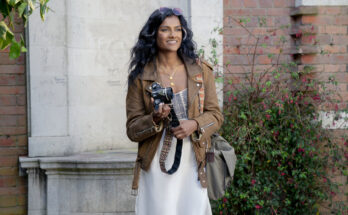
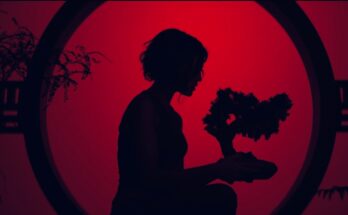
12 Comments on “‘The Last Of Us’ Season 1 Episode 8 Non-Spoiler Review – “When We Are In Need””